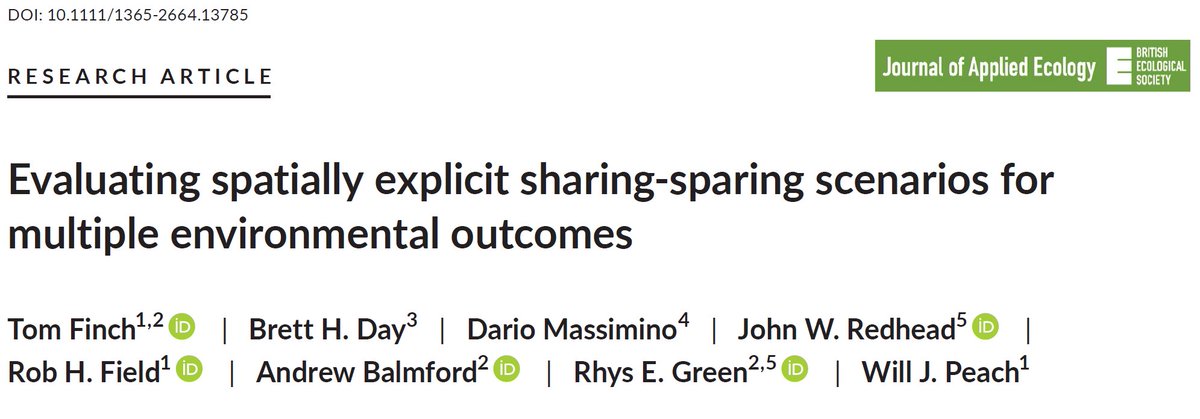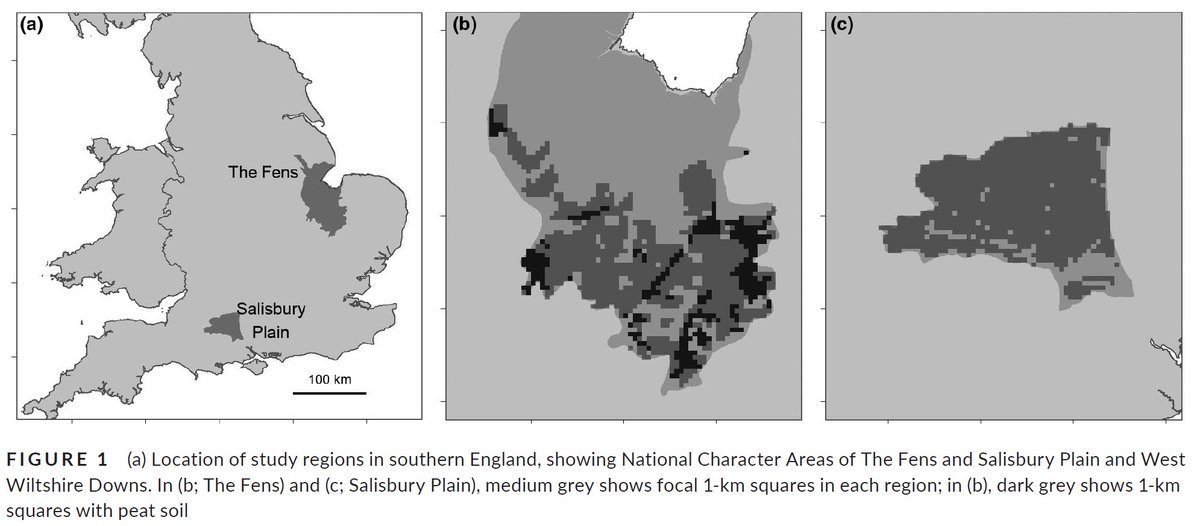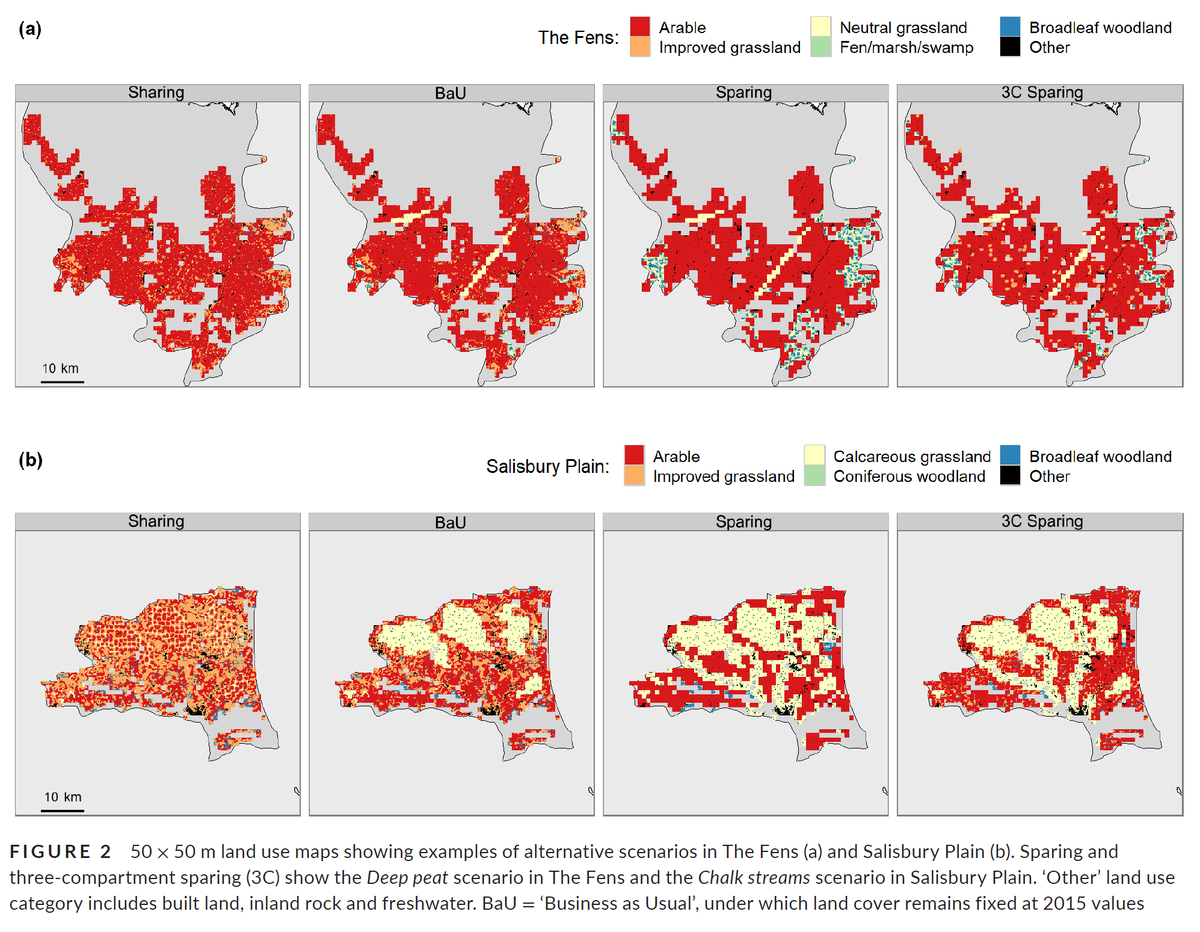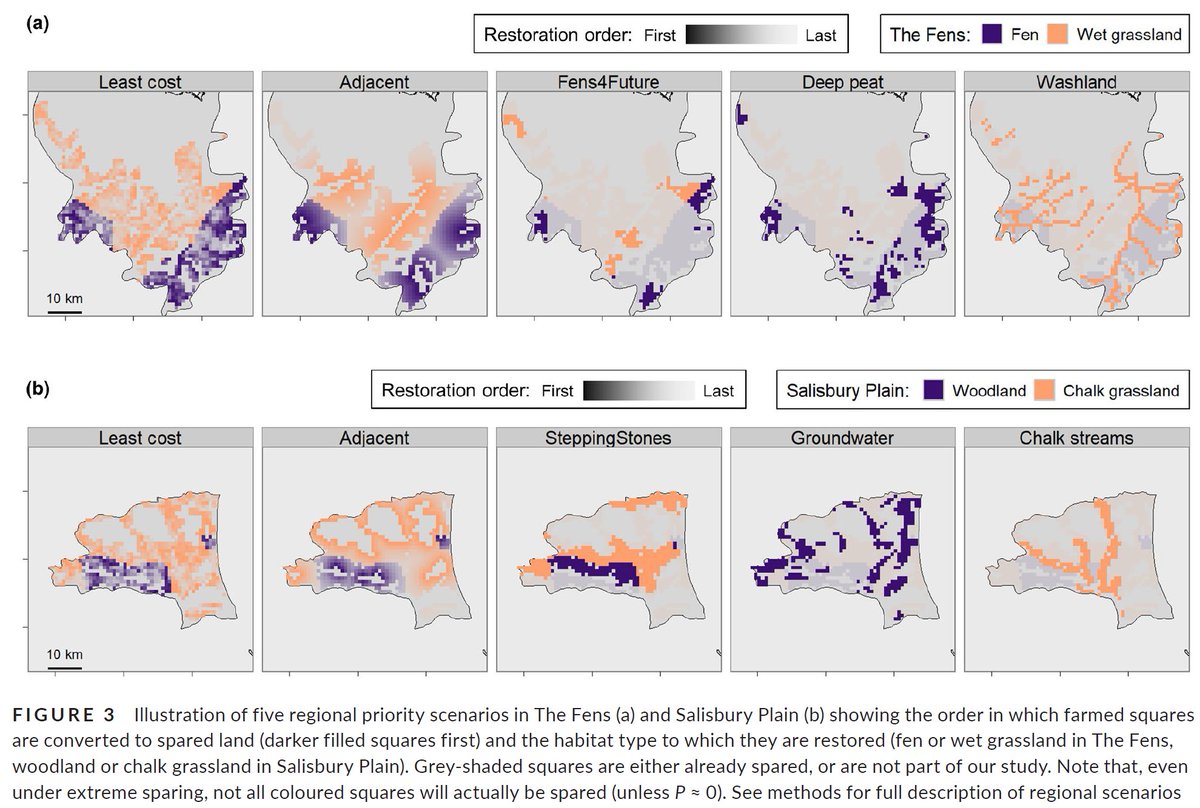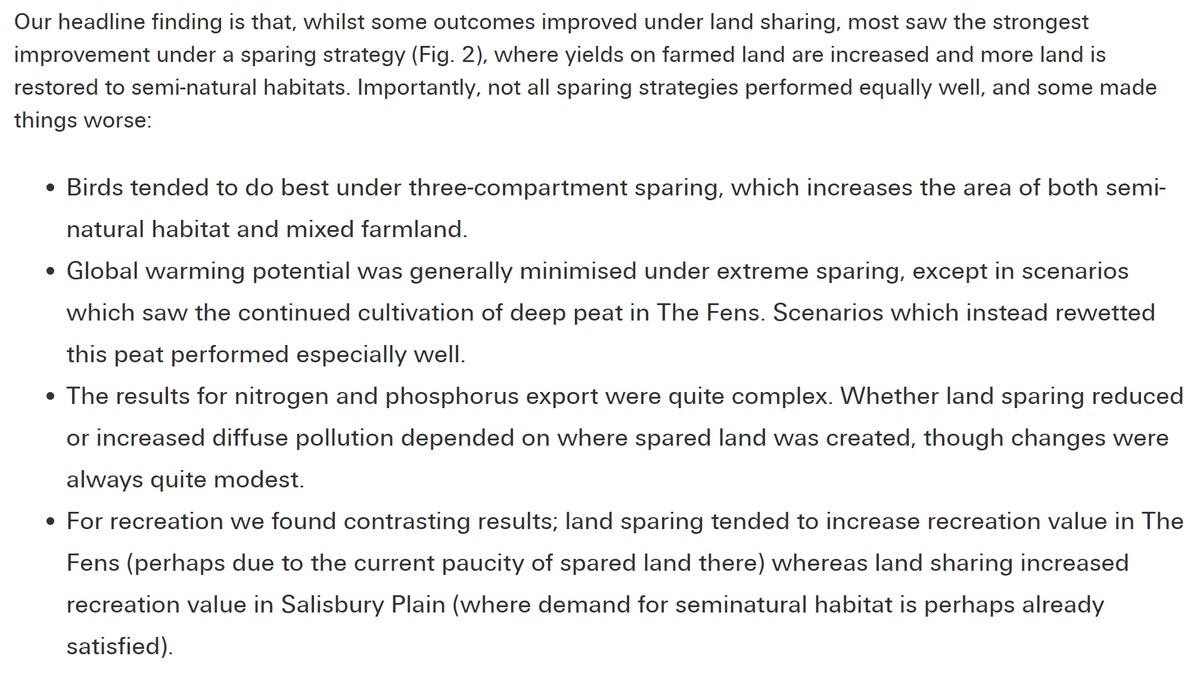A thread about our new paper
https://besjournals.onlinelibrary.wiley.com/doi/10.1111/1365-2664.13785
1/
https://besjournals.onlinelibrary.wiley.com/doi/10.1111/1365-2664.13785
1/
This work was motivated by an interest in how land can be better used to deliver everything we'd like it to deliver - including, but not limited to, food, nature, climate change mitigation and recreation 2/
To contribute to this debate, we designed some complicated-sounding but ultimately quite simple scenarios for the peaty part of the East Anglian Fens and the chalky part of Salisbury Plain 3/
Each scenario is matched in terms of total calorific supply, but seminatural habitat is either aggregated into larger spared areas (with the remaining farmed land becoming more arable-dominated), or spread across farmland (with the larger spared areas becoming smaller & fewer) 3/
For scenarios which involve the creation of new spared areas, we developed 5 regional plans which determined which spared habitats go where 4/
Next we did some modelling (mostly based on real-world data) to estimate the consequences of each scenario for birds, GHG emissions, recreation and diffuse pollution by N & P. 5/
Results! There's a lot going on, so I'm going to cheat and paste an extract from this blog which summarises our headline findings: https://community.rspb.org.uk/ourwork/b/biodiversity/posts/land-sparing-or-land-sharing-what-is-best-for-all-to-benefit 6/
If you want the 280-character version, then @RedheadGIS sums the paper up perfectly here: https://twitter.com/RedheadGIS/status/1328272298512617480?s=20 7/
If you're main interested is birds, then a combination of *both* sharing *and* sparing is usually best (see https://conbio.onlinelibrary.wiley.com/doi/abs/10.1111/cobi.13316 and https://royalsocietypublishing.org/doi/10.1098/rspb.2019.1483 for more of this). These mixed scenarios generally improve (though don't necessarily maximise) other outcomes too. 8/
For the policy angle, check out @AliceGroom2's great blog over on @WCL_News: https://www.wcl.org.uk/getting-the-right-balance-from-our-land.asp 9/
It's worth spelling out that this is a 'what-if' exercise, rather than a prediction of what would happen to land under specific policy/economic conditions. I think it's fair to say that past yield growth has contributed to cheaper food -> more waste, non-food uses, etc. 10/
So, until we start seeing explicit land sparing policies which deliver habitat restoration at scale, I think we should treat justifications of high-yield farming based on *potential* land sparing benefits with scepticism 10/
We should also scrutinise the environmental credentials of (high-yield) farming, which must operate within the land's capacity. But there are options for improving local environmental outcomes without reducing (or even whilst increasing) yields: https://advances.sciencemag.org/content/6/45/eaba1715 11/
Final observation: basically all of our measured outcomes improve when regional calorific production goes down. This underlines the importance of mitigating increases in food demand, through tackling waste and shifting diets 12/12

 Read on Twitter
Read on Twitter